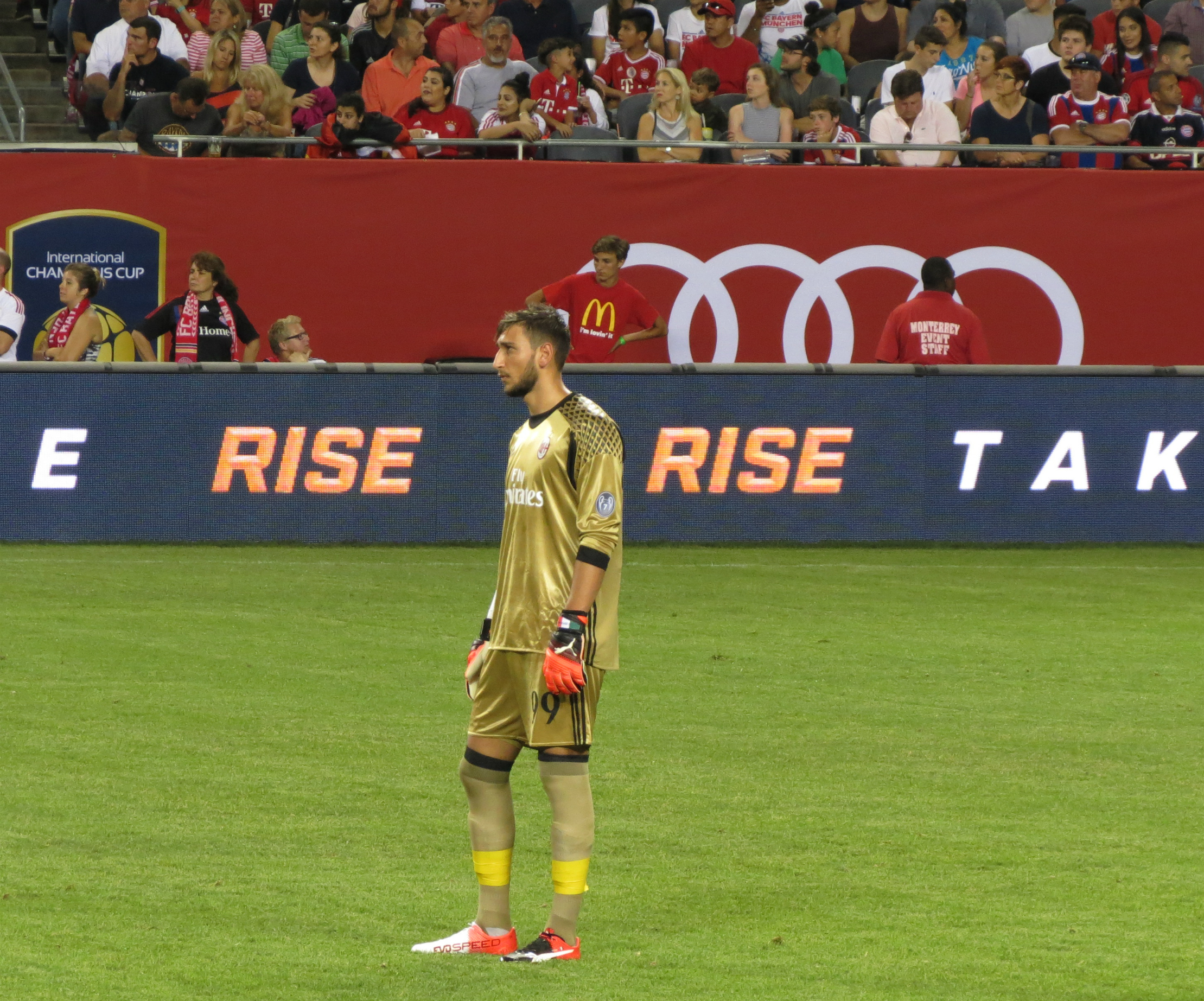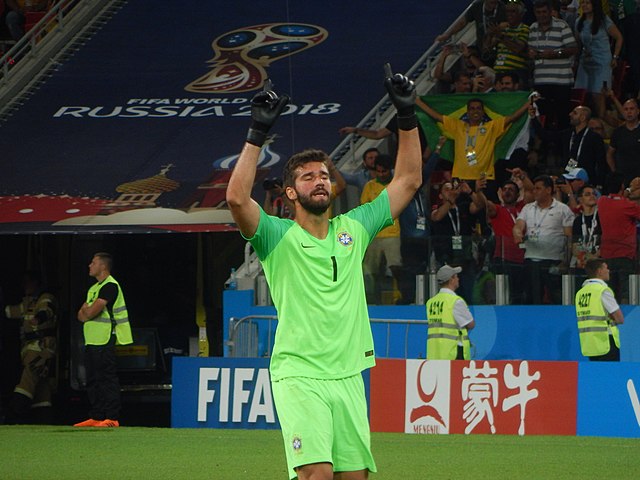How valuable is a Goalkeeper?

Image: ‘goatling’ via Flickr
Harry Richards takes an in-depth look into the true value a goalkeeper holds in a team
After EURO 2020 and a lucrative move to PSG, Gianluigi Donnarumma has announced himself on the European stage. Along with his two crucial saves in the all-important penalty shoot-out against England, the Italian demonstrated incredible shot-stopping ability and command of his box.
Ahead of his free transfer to PSG, along with an astronomical wage rumoured to be around £200,000 a week, it seems British viewers will see plenty more of the 22 year old at the very highest level.
Yet, it might not be that simple. Donarumma has chosen one of the very few clubs in world football that already as an exceptional ‘keeper. Their incumbent, Keylor Navas, boasts a higher save percentage, long pass completion, and post-shot xG +/-than Donarumma over the last 12 months, suggesting the Italian might not go straight into Pochettino’s starting position.
Evaluating goalkeepers with statistics like these are difficult for a multitude of reasons, but the use of post-shot xG is the best tool we have other than the eye test. Expected Goals (xG) ascribes a value on each shot based on the probability of an average footballer scoring it, but post-shot xG ascribes a value based on the quality of the shot.
Essentially, it measures how easy the chance is to save for the goalkeeper, whereas xG measures how easy it is for the attacker
xG remains imperfect, hence the need for huge, season-long, sample sizes. Yet, to be fair to the stat –the right names do come up. In the Premier League last season, Emi Martinez, Alisson, Pope, Lloris and Fabianski all come in the top 8 shot-stoppers in terms of PSxG.
With that long disclaimer out the way then, back to Donarumma. Albeit over an incredibly small sample size, Donarumma had a PSxG/90 of +0.18. This means, per 90 minutes, he saved 0.18 more goals than an average goalkeeper would be expected to.
This compares favourably to keepers like Simon and Pickford, who are below 0.10, even though any positives there is impressive.
The obvious example of a goalkeeper being worth the price over the last few years is Alisson Becker. In his first season at Liverpool, Alisson recorded a PSxG/90 of +0.14: the same as Navas in Ligue 1 last season, and double Donarumma in Serie A. Karius had +0.05, in a season where he played pretty well in the league, if not in Kyiv. Mignolet, though, had -0.17.

Image: Oleg Bkhambri via Wikimedia Commons
Spending huge money on a goalkeeper immediately improved Liverpool’s defence, almost overnight. But a world-class goalkeeper should add far more to their side than shot-stopping. Generally, the top keepers can be split into 2 schools: emulators of Neuer, and of Oblak.
Alisson fits squarely into the Neuer category, with extravagant distribution and sweeping. Donarumma fits Oblak: a giant frame, incredible shot-stopping but a reluctance to come off his line.
In 2020/21 Donarumma recorded 0.59 defensive actions outside his penalty area per 90 minutes. Alisson had 1.33, and Neuer 1.27. In 2020/21, Donarumma launched 41.1% of his goal kicks long. Alisson had 32%, with Navas and Neuer on 23% (click here for the statistics).
Of course, a lot of this can be team instructions. Milan are less of a pure footballing side than PSG or Bayern, and defend far deeper so there are less opportunities to sweep high up the pitch or build up slowly. And Donarumma sits around average with 40%; Oblak has 67.5%, and Nick Pope of the infamously defensive Burnley had 86.1%.
Regardless though, if Donarumma wants to displace Navas at PSG, he will have to learn to sweep high, and offer more on the ball. Every goalkeeper does; even the best footballing keepers, like Ederson, make mistakes under very little pressure.
Modern football is all about compactness, and goalkeepers are far more important to that than often considered. If you trust your goalkeeper to sweep far out of their box, your defensive line can be far higher.
Liverpool’s high defensive line was criticised often this season for being too easy to get in behind, but it shows just how far coaches will go to compress the pitch. The more compact the playing area, the more frantic the play gets and the easier it is to press and win the ball back. If your goalkeeper is not comfortable sweeping, defensive lines naturally drop deeper, and make it easier for the opposition to play through your press.
The most important skill for a modern goalkeeper, outside of shot stopping, is distribution. This leads us to England, and their keeper, Jordan Pickford, who by most measures had a decent Euros. He conceded the least goals per-90, had the highest save percentage, and won the golden glove. And yet, at times it was alarmingly obvious that the goalkeeping position will need to be strengthened over the next few years after some erratic decisions from Pickford.

Image: Oleg Bkhambri via Wikimedia Commons
All 3 of those stats are flawed, and more representative of how good England’s system and defence were rather than their goalkeeper. Against both Denmark and Italy, the Everton keeper was shaky in possession. And his lack of confidence filters through to the defence.
Pickford’s main issue was how often he resorted to going long. Over the EUROs as a whole, his goal kicks went long 60% of the time, and his open play passes 50% of the time. The average length of his goal kicks was 20 yards longer than Donarumma, at 52.4 yards –nearly the halfway line of the 115yd pitch. Going long that often simply invites pressure.
Long passes are a useful tool: think of how often Alisson releases Liverpool on counter-attacks with long throws or kicks, or how Ederson can ping the ball so far Sterling is in on goal.However, that requires accuracy. Too many of Pickford’s passes were aimless punts at Kane’s head, or misjudged and resulted in a throw-in.
This is reflected in his stats; Pickford completed just 37.2% of his long passes, with Simon, Courtiois and Schmeichel all over 50%. Even including short passes, Pickford recorded a 64.6% pass completion. That means that 35% of the time England passed to Pickford, he lost it. That then means England had to defend in a deeper block for longer, and against Italy, they paid the price. You cannot sit so deep for so long and expect to get away with it.
A key reason that England sat so deep was not tactical instruction, but an inability to keep the ball. Unfortunately, their goalkeeper was a key part of that.
This is not to say that Pickford is a bad goalkeeper, just that he is not world class. Being a modern goalkeeper is incredibly difficult, and you need extreme competency in both shot stopping and distribution.
So that is why teams are spending so much on goalkeepers. It is simply the hardest position to fill in a squad–and it makes such a big difference.
And in international football, there is very little to do other than hope an academy performs a miracle. England, in 18 months time, will be shooting against Alisson, Courtiois and Donarumma. The confidence a top class goalkeeper brings is immense.
Unless that miracle comes, that confidence will have to come from other places for England in Qatar.


